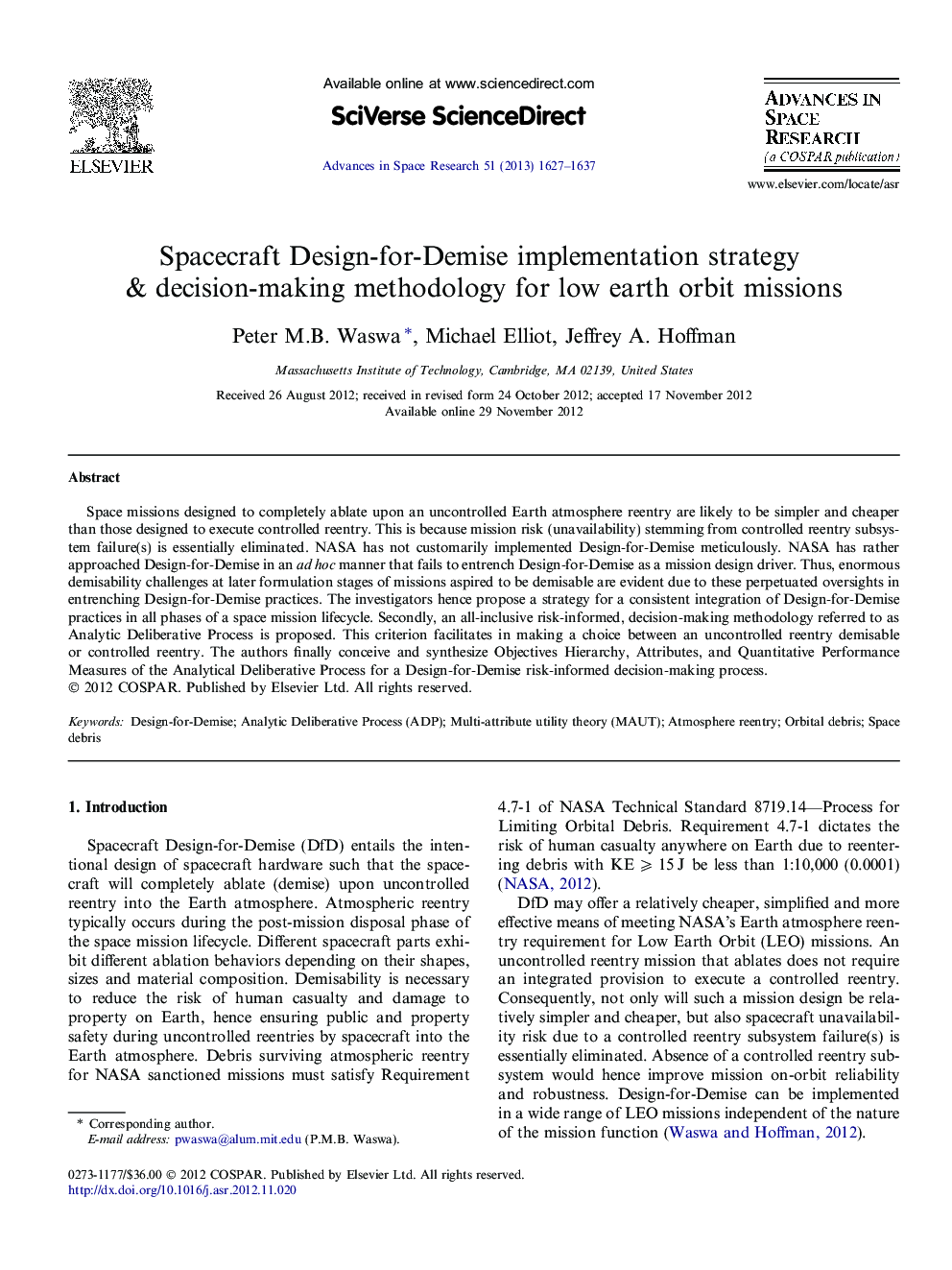| Article ID | Journal | Published Year | Pages | File Type |
|---|---|---|---|---|
| 1764929 | Advances in Space Research | 2013 | 11 Pages |
Space missions designed to completely ablate upon an uncontrolled Earth atmosphere reentry are likely to be simpler and cheaper than those designed to execute controlled reentry. This is because mission risk (unavailability) stemming from controlled reentry subsystem failure(s) is essentially eliminated. NASA has not customarily implemented Design-for-Demise meticulously. NASA has rather approached Design-for-Demise in an ad hoc manner that fails to entrench Design-for-Demise as a mission design driver. Thus, enormous demisability challenges at later formulation stages of missions aspired to be demisable are evident due to these perpetuated oversights in entrenching Design-for-Demise practices. The investigators hence propose a strategy for a consistent integration of Design-for-Demise practices in all phases of a space mission lifecycle. Secondly, an all-inclusive risk-informed, decision-making methodology referred to as Analytic Deliberative Process is proposed. This criterion facilitates in making a choice between an uncontrolled reentry demisable or controlled reentry. The authors finally conceive and synthesize Objectives Hierarchy, Attributes, and Quantitative Performance Measures of the Analytical Deliberative Process for a Design-for-Demise risk-informed decision-making process.
